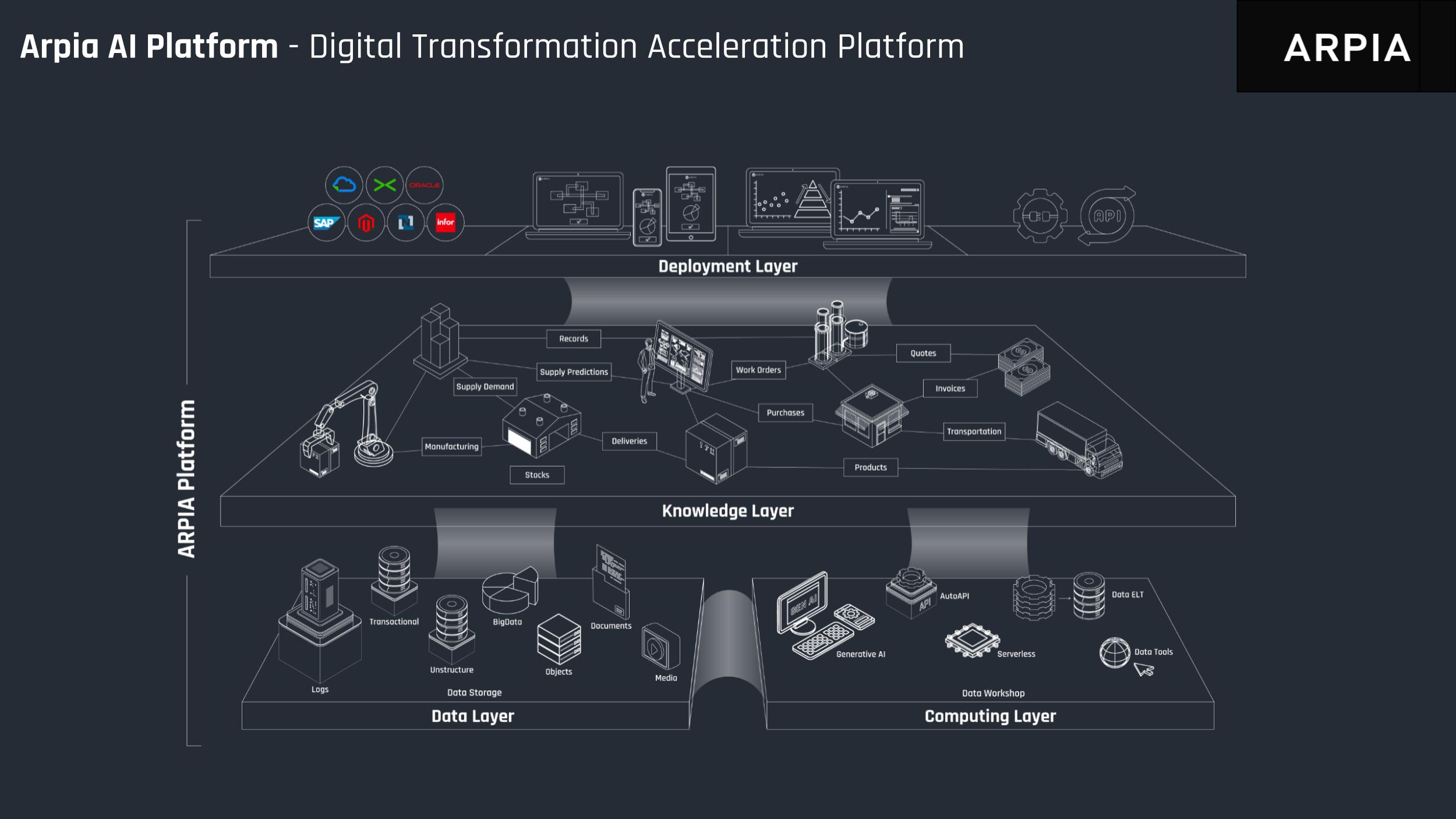Introduction
Overview
ARPIA is an Enterprise AI Platform that revolutionizes how organizations integrate, deploy, and manage artificial intelligence within their existing infrastructure. As a Platform as a Service (PaaS), ARPIA serves as a comprehensive innovation accelerator, enabling enterprises to harness the full potential of AI while maintaining robust security and seamless integration with legacy systems.
Purpose of This Documentation
This documentation provides a detailed overview of ARPIA's ecosystem architecture and security framework. It serves as a comprehensive guide for technical leaders, developers, security professionals, and system administrators who are implementing, managing, or evaluating the ARPIA platform for their organization.
Platform Value Proposition
ARPIA enables organizations to:
Deploy Enterprise-AI solutions with minimal disruption to existing operations
Integrate legacy systems and data sources into a unified knowledge layer
Implement robust security measures while maintaining operational flexibility
Scale AI capabilities across the organization with governed access and control
Accelerate innovation through AI-powered automation and decision-making

Key Components
The platform is structured across four fundamental layers:
Data Layer
Robust integration tools for connecting diverse data sources
Enterprise-grade storage solutions with security at their core
Scalable architecture for handling large-scale data operations
Computing Layer (Workshop)
Advanced processing capabilities through Kubernetes clusters
Automated scaling and resource optimization
Secure execution environment for AI workloads
Knowledge Layer (Knowledge Grid)
Centralized intelligence hub
Unified data access and governance
Secure knowledge management and distribution
Deployment Layer (AppStudio)
Streamlined application deployment
Security-first implementation tools
Enterprise-ready application management
Security Framework
ARPIA's security framework is built on three core principles:
Comprehensive Protection
Multi-layered security architecture
End-to-end encryption for data in transit and at rest
Advanced authentication and access control mechanisms
Compliance and Governance
SOC 2 certification process
Regulatory compliance support
Robust audit and monitoring capabilities
Enterprise-Grade Security
Two-factor authentication
Encrypted credential management
Secure deployment options (cloud, on-premise, hybrid)
Target Audience
This documentation is designed for:
Enterprise Architects and Technical Leaders
Security Officers and Compliance Managers
Development Teams and System Administrators
AI/ML Engineers and Data Scientists
IT Operations Teams
How to Use This Documentation
The following sections provide detailed information about:
Platform architecture and component interaction
Security implementations and best practices
Deployment scenarios and configurations
Integration guidelines and protocols
Maintenance and support procedures
This documentation serves as both a technical reference and a strategic guide for organizations implementing ARPIA's Enterprise AI capabilities while maintaining robust security standards.
Updated 10 months ago
